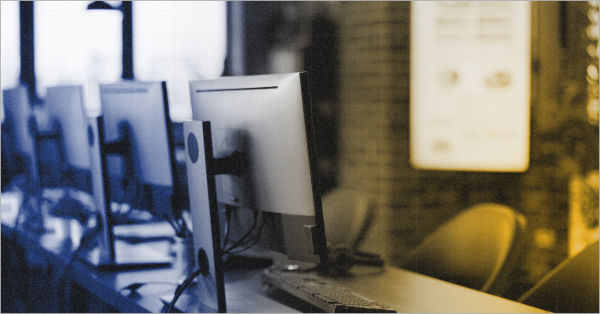In the modern digital-first economy, electronic devices are the foundation of almost all companies, be it a busy fintech startup in Bengaluru, a diagnostic lab in Mumbai or a media production house in Delhi. These devices cannot be considered as mere tools of business operations; they are lifelines. However, what occurs when these essential equipment fail, break down or get damaged by accidents?
And that is where Electronic Equipment Insurance (EEI) comes into the picture. With Indian enterprises increasingly going digital, securing information, and automating processes, there has never been a more important time to secure valuable electronic assets. This blog demystifies all you need to know about electronic equipment insurance in India, including its coverage, benefits, claim process and so on.
Understanding Electronic Equipment Insurance
Electronic Equipment Insurance is a niche insurance cover that is meant to protect physical damages to electronic gadgets and systems, which may be accidental, sudden and unexpected. It provides cover against a wide range of covered perils- be it a server outage caused by a short circuit or an X-ray machine that has internal failures.
This insurance isn’t just for tech giants or large corporations. It’s ideal for:
- Small and medium enterprises (SMEs)
- Hospitals and pathology labs
- Engineering and research institutions
- IT companies and startups
- Media production and broadcasting units
- Educational institutions with computer labs
In short, if your business heavily depends on electronic systems, this insurance is your safety net.
Key Features of Electronic Equipment Insurance
Electronic Equipment Insurance is unique in terms of its customisability and its all-risk cover. The salient characteristics are as follows:
- All-Risk Coverage:It includes physical damage or loss caused by any reason that is not specifically excluded in the policy schedule.
- Coverage for Portable Devices: Covers damages/ losses to laptops, handheld scanners, and field devices due to covered perils
- Optional Add-On Covers:
- Hard drives, USBs and other external data media
- Additional costs of working (rental of alternative in case of breakdown)
- Liability of third party damage caused by an insured equipment
- Depreciation Handling: Some policies provide coverage on a reinstatement value basis (new for old).
Overall, EEI is a comprehensive and customisable solution that can cater to different industry needs.
What Does Electronic Equipment Insurance Cover?
Wondering what exactly falls under the protection umbrella of EEI? Here’s what is typically included:
- Accidental Damage
Covers sudden impacts, drops, and other mishaps that physically damage the equipment.
- Fire and Allied Perils
Includes fire, explosion, lightning, and water damage from fire-fighting measures.
- Theft or Burglary
If equipment is stolen or damaged during burglary, the policy compensates for losses.
- Electrical and Mechanical Breakdown
Sudden failures in circuits, fuses, switches, or internal mechanisms are included.
- Short Circuits and Voltage Surges
Power fluctuations causing damage to internal components are covered.
- Damage During Transit (Optional)
If opted, this add-on can cover loss while transporting equipment between premises.
This comprehensive coverage ensures that you don’t have to worry about costly downtime or replacement expenses.
What is Not Covered in EEI? (Exclusions)
Even though the coverage is often generous, there are some standard exclusions to watch out for:
- Wear and Tear: Wear and Tear due to age or regular usage is not covered.
- Manufacturer Defects:Defects that are attributable to the manufacturing process of the insured equipment are not included.
- Wilful Negligence or Misuse: Intentional damage or misuse by employees or owners is not covered.
- War, Nuclear Risks & Terrorism: These perils fall under special/ optional covers and aren’t included by default in standard policies.
- Unproven Loss: Losses that are not substantiated by valid evidence/documentation can be denied.
- Maintenance Costs: Costs related to routine servicing or maintenance are not covered.
Proper knowledge of exclusions will save you from unpleasant surprises when it comes to settling the claim.
Types of Electronic Equipment Covered
From small gadgets to complex industrial machinery, here are common devices insured under EEI:
- Computers, Servers & Networking Devices– which are the heart of any modern business
- Diagnostic and Medical Equipment: X Ray machines, MRIs, ECG monitors and so pn
- Broadcasting Systems: Audio-visual production and transmission devices
- CCTV & Surveillance Equipment: Essential for security and compliance
- Laboratory Equipment: Used in research, testing and analysis
- IT Infrastructure: Routers, switches, UPS systems, storage units
As long as the equipment is electronic, functional and in current use, it qualifies for Electronic Equipment Insurance coverage.
Importance of Electronic Equipment Insurance for Indian Businesses
In a country like India where infrastructural inconsistencies like voltage spikes, heavy water logging during monsoons and sudden power cuts are the order of the day, safeguarding your electronic infrastructure can be no less than a tactical move.
1. Expensive Repair and Replacement
Many electronic systems are imported or custom-built. For example, it may cost lakhs of rupees to repair a defective medical equipment or replace a faulty server.
2. Business Continuity
Faulty machinery may halt production, cause data loss, or cause delays in deliverables. EEI guarantees continuity through provisions as the alternate equipment cover.
3. Contractual and Legal Requirements
In some B2B contracts, equipment is mandated to be covered under insurance. It can also be insisted on by Government tenders in cases of IT or telecom projects.
4. Rising Cyber-Physical Threats
EEI can complement cyber insurance by covering physical threats that may eventually lead to security vulnerabilities.
How to Choose the Right Electronic Equipment Insurance Policy
Selecting the right policy isn’t just about premiums. It’s about aligning with your risk profile and operational needs.
- Evaluate Equipment Inventory
Make a list of all electronic items, their purchase value, and estimated replacement costs.
- Understand the Insured Declared Value (IDV)
Check if the policy offers market value, depreciated value, or reinstatement value coverage.
- Compare Policies and Riders
Look for customisation options, claim processing time, and value-added services.
- Check Claim Settlement Ratio
Insurers with high claim settlement rates usually offer smoother post-incident experiences.
- Read the Fine Print
Pay attention to exclusions, conditions and mandatory deductibles.
Partnering with an insurance advisor or broker can simplify this process and help you avoid underinsurance or overinsurance.
Claim Process for Electronic Equipment Insurance in India
Making a claim should not be a nightmare–unless you do it in the wrong way. Here are the steps involved in a typical claims process in EEI policies in India:
Step 1: Inform the Insurer Immediately
Inform your insurance provider as soon as possible after the event–precisely within the prescribed time limit (normally 24-48 hours).
Step 2: Document the Loss
Keep photographs / videos of the damaged equipment and the scene of the incident.
Step 3: Submit a Written Claim
Fill up the claim form properly and submit it along with documents required. Some of such documents are:
- Invoice or a proof of purchase
- Service report from an authorised repair facility
- FIR in cases of theft or vandalism
- Surveyor report ( in cases of high-value claims)
Step 4: Inspection and Assessment
A surveyor can be appointed by the insurance provider to confirm the damage level.
Step 5: Settlement
After the necessary approval, the claim will be settled through repair reimbursement or replacement value.
Please note: The most important aspect of a hassle-free claim process is timely and complete documentation.
Final Thoughts:
Electronic Equipment Insurance is no longer a luxury. Rather, it’s a necessity in the digitised business world that exists today. Whether you are running a high-tech IT firm, managing a hospital or operating a studio, electronic equipment and assets are the very cornerstones of your operations. It takes just one power surge, one accidental drop or one short-circuit and your business can be thrown into complete disarray.
With the right EEI policy, you are not only insuring your gadgets; you are insuring productivity, continuity and reputation. So, if your business relies on electronics (and who doesn’t today?),it is time to think of Electronic Equipment Insurance, not as a secondary measure but as an important component of your risk management plan.








